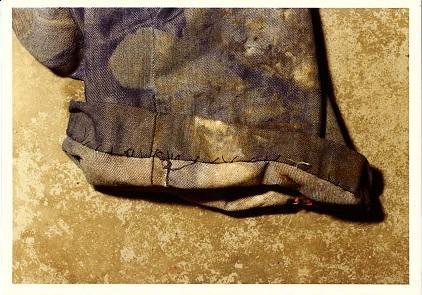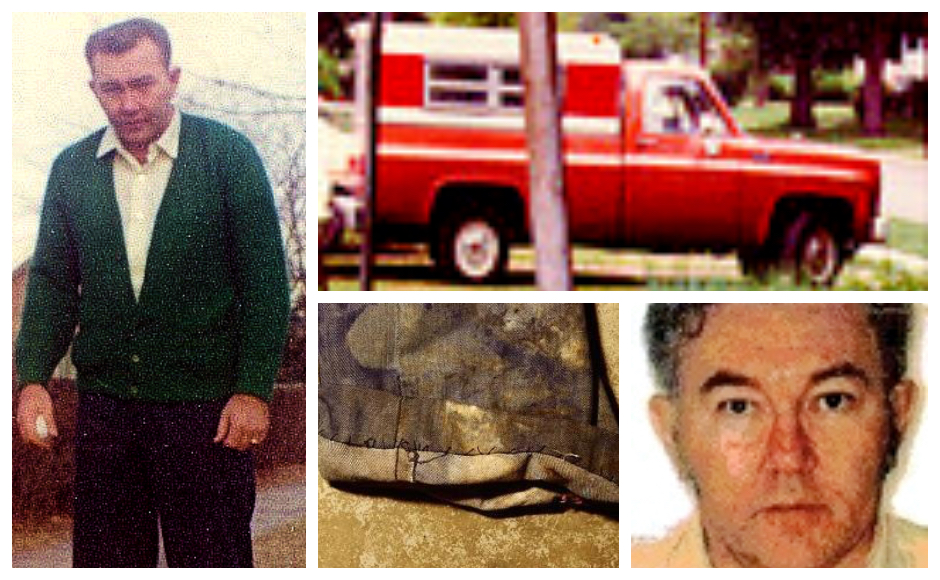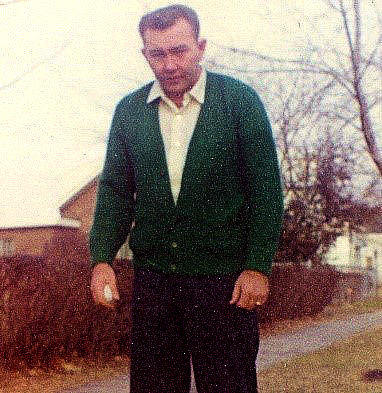The only cold case in the borough finally came to a conclusion decades after the technology that would resolve it was pioneered in law enforcement.
By Matt Skoufalos | September 23, 2021
In July 1981, Theodore “Teddy” Kampf of Oaklyn set off on the cross-continental road trip of a lifetime.
Kampf, a longtime worker with Bell Telephone, was headed for one of the most remote destinations in North America: Yukon, Canada.
Bordered by Alaska, British Columbia, and the Northwest Territories, Yukon is known for its historic role in the Klondike gold rush, which in 1896 sent some 100,000 prospectors into the Canadian countryside in search of riches.
Nearly 100 years after the last of them had quit that harrowing quest, Kampf was headed to Dawson City, the historic gold rush outpost, on his own grand adventure.
The Oaklynite had befriended someone who owned land around Dawson City, and was planning a visit. He bought a new, 1980 Chevrolet pickup truck, converted about $5,000 into travelers checks, and headed out west.
Kampf’s parents received a letter from their son dated July 11, 1981. In it, their son detailed that he was getting use out of a handy camping stove he’d packed, and that he’d had to hem his pants.
Two days later, Kampf called his parents from Mount Vernon, Washington, and told them he was preparing to cross the border into Canada. It was the last communication the family had with him. When Kampf didn’t return home at the end of the summer, they reported him missing.
On October 7, 1981, the Oaklyn Police Department opened an investigation into Kampf’s disappearance. The tools at their disposal were several generations behind what’s available today.
“This was all pre-cell phone and the Internet,” said Oaklyn Police Sergeant Jayne Jones. “Everything was on a teletype machine.”
Oaklyn Police Chief Jack Laggy and Detective Edward Kunkel began the investigation by entering Kampf’s information into the National Crime Information Center (NCIC) index. They contacted the Royal Canadian Mounted Police (RCMP), the national police service of Canada, and began searching for his pickup truck.
The first piece of evidence in the case didn’t reach New Jersey until February 1982, when Kampf’s parents were notified that his new Chevy had been discovered in a ravine in Granite Ghost Town State Park—another historic prospecting community—in Philipsburg, Montana.
“Two hunters found it, winched it out of the ravine, and were using it as a DPW vehicle,” Jones said. “Investigators in Montana didn’t know it had been involved in a missing persons case.”
Before it was salvaged, however, Kampf’s truck had been involved in a prior crash: on July 27, 1981, in Boise, Idaho.
The driver whose car had been struck in that collision reached Kampf’s parents while searching for information to back up her insurance claim.
Based on her descriptions, however, they quickly realized that the person who had been driving Teddy’s truck was not their son.
Neither was his body found in the ravine in Montana.
Laggy and Kunkel followed up with the driver in Boise and the hunters in Philipsburg, but “everything was a dead end all the way through,” Jones said.
Thereafter, more information trickled in. Traveler’s checks that had been cashed with Kampf’s forged signatures traced a path through the northern United States. Investigators tried to determine where and when his truck had re-entered the country, but “as time went on, there wasn’t much else to go on,” Jones said.
After a while, the trail just went cold. Kampf’s father died in 1995, never having gotten word of his son’s ultimate fate; his mother followed after, in 2002. By the time Jones joined the Oaklyn detective bureau in 2006, the case hadn’t generated a new lead in decades.
“Teddy was the only missing person case that we had; being the TAC (Terminal Agency Coordinator) officer, you’re in charge of making sure the missing persons entries are still in the system,” Jones said.
“I would update it every year,” she said. “You would get faxes, a possible hit for your missing person; you would go in, find out where the remains were found, and do a comparison. It was always ruled out that it wasn’t him.”
Meanwhile, however, investigators in Canada had been working on a similarly unsolved case that dated back to May 1983, when unidentifiable human remains were discovered by a river about 40 kilometers outside of Dawson City.
“There’s a road called the Dempster Highway that goes way up north, to the Arctic Circle,” said
RCMP Constable Michael Simpson. “There was a family going out there collecting firewood, and they came across something that seemed odd.”
According to RCMP records, the family had discovered “the remains of a man with hairy legs… buried several meters from a road by a woodland brush.”

Mended jeans uncovered in an unmarked grave in Yukon, Canada. Credit: Royal Canadian Mounted Police.
Simpson said the shallow grave that investigators discovered there had been partly destroyed by animals, but still contained a number of personal effects—including a camper stove and hemmed jeans of American manufacture.
“We believe, based on the reports at the time, that it’s a homicide,” Simpson said.
“It was suspicious at the time; it’s still suspicious now.”
What finally connected investigators on both sides of the border was DNA evidence, which wasn’t first used in a criminal case in the United States until 1987, and until 1989 in Canada.
Investigators in Oaklyn had been trying to confirm Kampf’s identity through dental records, only to discover that Canada didn’t use the same charting that America does.
When forensic DNA technology became more widely available, however, Jones began working with Kampf’s surviving relatives, including cousins on both his mother’s and father’s sides of the family, to collect an ancestral sample that could be run against data in the National Missing and Unidentified Persons System (NamUs).
Meanwhile, Canada had established a National DNA Data bank (NDDB) under the management of the RCMP in 2000, but DNA profiles of missing people weren’t entered into it until 2018. The Yukon RCMP historical case unit was established a year later, but connecting the information in the Canadian and American systems proved to be an inter-jurisdictional challenge that took even more time to resolve.
“People always think DNA is 100 percent, but then you’ve got to do all that legwork to really make sure you got the right person,” Simpson said.
“It’s very frustrating,” Jones said. “Even after we were contacted by Constable Simpson, you still had to go through the process. We had the DNA profile, but the U.S. and Canada didn’t have an agreement to share the DNA.”
Finally, in February 2021, Oaklyn Police were notified that the remains that had been identified in Yukon nearly 40 years ago matched Kampf’s DNA. It took months more before they could confirm all the details.
For Jones, the results are bittersweet.
“Eventually you do get answers, and I was thankful for that,” she said.
“[It took] 40 years of people who cared enough, and would still discuss the case, and talk about it.
“It’s satisfaction in the sense that you know what happened; you know where he was,” Jones said.
“However, I don’t think there’s going to be any closure until he’s brought back and properly buried with honors,” she said. “He was a vet; I’d like to see him recognized that way.”
Simpson still holds out hope that investigators will come to an understanding of the details of the case, and who was involved.
“Hopefully, this will stir more information,” he said. “I’ve gotten quite a bit over the last year. I always find people talk about these things, and people that have heard things about this could also come forth, which would be very helpful as well.
“There’s still a few pieces to the puzzle,” he said. “We’ll keep working at it.”
Simpson believes Kampf made it to Dawson, but that he likely wasn’t there very long, and that “whatever transpired” happened quickly, and was the work of “a number of people.”
“There were active efforts to conceal what had happened to him,” the constable said. “He was placed in a shallow grave; efforts were made to conceal that. Somebody took the truck to the States.”
The same details that complicate the case also offer some hope; namely that, at the time of Kampf’s visit, “it was quite an active time” for the city, Simpson said.
“Dawson was built on gold discovery, and in 1983, gold prices were quite high,” he said. “There were numerous foreigners who’ve come up through there, and still do.
“I think [Kampf] was in between jobs, and this was part of a bigger vacation,” Simpson said. “He may have wanted to do a couple things on this trip, [and] coming up here was one of them. He seemed like he was on an adventure, I suppose.”
Nonetheless, knowing that Kampf’s remains have been identified after all this time provides some answers. For Jones, it’s the resolution to the only cold case in the history of her department; for Kampf’s relatives, she knows it’s more than that.
“We all have those family members who you hear stories about through the years, and that’s who Teddy’s been,” she said. “I like to think that when Mr. and Mrs. Kampf passed, they all were reunited.”







